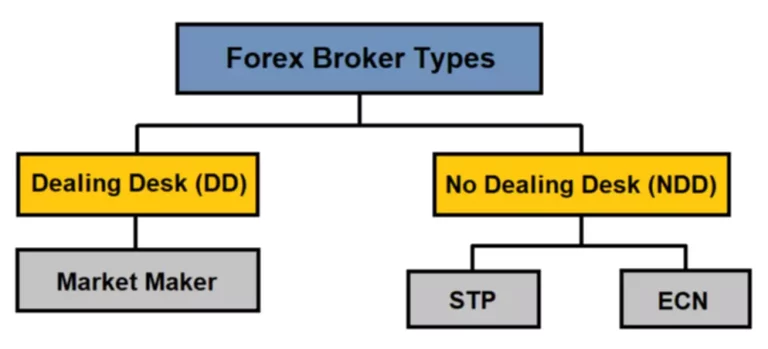- 25 de janeiro de 2023
- Comments: 0
- Posted by: mma
But those that efficiently navigate the dangers typically safe returns higher than those supplied at a bank. For instance, when the crypto markets are volatile, customers can experience losses and value slippage. Anytime you earn rewards from holding specific cryptocurrencies, it can be considered a type of staking. Depending on the trade and foreign money, this could be automatic or require extra steps to make a staking deposit.
Curve goals to allow users to make massive stablecoin swaps with relatively low slippage. Some commonly used metrics are Annual Percentage Rate (APR) and Annual Percentage Yield (APY). The distinction between them is that APR does not bear in mind the impact of compounding, whereas APY does. Compounding, in this case, is the reinvestment of earnings again into the protocol to generate extra returns. Those who’re making huge returns usually have plenty of capital behind them.
Yield farming is necessary as it may possibly help projects acquire preliminary liquidity, but it is also useful for both lenders and borrowers. NerdWallet, Inc. is an impartial publisher and comparison service, not an investment advisor. Its articles, interactive tools and other content material are offered to you for free, as self-help instruments and for informational functions solely. NerdWallet doesn’t and cannot guarantee the accuracy or applicability of any information in regard to your individual circumstances. Examples are hypothetical, and we encourage you to seek personalized recommendation from qualified professionals concerning specific investment points.

Other yield farming “experiments” have concerned experimental—and unaudited—code, which has led to unintended penalties. Then there is Compound, a DeFi platform that permits folks to earn cash on the crypto they save. The investing data offered on this web page is for instructional functions solely. NerdWallet, Inc. does What is Yield Farming not supply advisory or brokerage companies, nor does it suggest or advise buyers to purchase or promote particular shares, securities or different investments. We imagine everybody should be in a position to make financial selections with confidence.
Yield Farming Defi Platforms Ranked By Issue
Yield farmers usually rely on DEXs to lend, borrow, or stake coins—an exercise that permits them to earn interest and speculate on value swings. For now, whereas it could be a bit of a unstable train, it’s one with an unbelievable quantity of potential. With institutions beginning to jump on board and test protocols, it wouldn’t be stunning if the speed of adoption increases significantly.

For instance, yield farmers can continually shift their cryptos between multiple loan platforms to optimize their gains. As numerous Ethereum developers have informed Decrypt, certain yield farming projects won’t last and are merely not sustainable. These tasks typically increase huge quantities in a brief time frame and are then forgotten about.
You can find yield farms through decentralized finance (DeFi) platforms corresponding to PancakeSwap or cryptocurrencies exchanges similar to Bitrue. Yield farming is the method of using decentralized finance (DeFi) to maximise returns. Users lend or borrow crypto on a DeFi platform and earn cryptocurrency in return for their companies.
Pooltogether
And if you take inflation into consideration, usually you finish up shedding buying energy as a end result of banks don’t provide interest rates excessive enough to cowl the difference. If the worth of ETH starts to drop, meaning traders are selling ETH for DAI. This causes the ratio of the pool to shift so that it is extra ETH heavy. Alice’s share of the pool would still be 25%, however she would now have a better ratio of ETH to DAI.
Yield farming is a high-risk funding technique during which the investor offers liquidity and stakes, lends, or borrows cryptocurrency belongings on a DeFi platform to earn a higher return. Yield farming allows investors to earn yield by putting cash or tokens in a decentralized utility, or dApp, thereby offering liquidity to varied token pairs. Some examples of these are cryptocurrency wallets, decentralized exchanges (DEXs), and decentralized social media. That stated, staking and yield farming are often used interchangeably since both successfully are ways of incomes rewards on cryptocurrency deposited in a pool. Some cryptocurrency holders don’t wish to receive a yield on lending due to faith-based values that prohibits the usage of usury or curiosity acquired on the lending. In that case, staking may be an possibility for them rather than yield farming.
Risks Of Yield Farming
Interest in the token jump-started its recognition and moved Compound into the main position in DeFi. Yield farming is an interesting way for cryptocurrency lovers to earn a return for investing their cryptocurrency, not simply from a rise in the currency’s worth. However, yield farming may not be worthwhile for many buyers, notably newer investors, because of the risks concerned. It’s attainable for a foreign money worth to rapidly drop while your funds are locked in a liquidity pool or yield farm.
Yield farming took off in reputation because of its purposes, corresponding to in liquidity mining, which is the apply of lending crypto property to a decentralized change in return for incentives. Yield farming was once the biggest progress driver of the fledgling DeFi sector, but has lost most of its 2020 hype after the collapse of the TerraUSD stablecoin in May 2022. Yield farming is a system where customers can deposit cryptocurrency in a pool with different cryptocurrency users to pursue funding positive aspects, most sometimes via interest earned by lending the pooled cryptocurrency. Yield farming is a really risky strategy with potential for top rewards. After you’ve shaped this basis and developed confidence, you might transfer on to different investments or even buy tokens instantly.
Those offering liquidity are additionally rewarded based on the amount of liquidity supplied, so these reaping huge rewards have correspondingly huge amounts of capital behind them. Yield farmers are sometimes very skilled with the Ethereum community and its technicalities—and will transfer their funds around to completely different DeFi platforms to have the ability to get the best returns. If you’re new to DeFi and wish to learn about yield farming, Compound is a safe beginner-friendly possibility. After getting the hold of issues using the Compound app, you can begin branching out to other DeFi protocols.
Yield farming relies on sensible contracts, which are subject to potential vulnerabilities and exploits. Bugs or safety vulnerabilities in good contracts can lead to financial loss, together with the lack of deposited funds and earned rewards. It’s essential to evaluate the safety and audit the protocols you select to take part in and train caution. Staking entails locking up a sure quantity of coins in a blockchain to assist help the security and operation of a blockchain community. By staking their tokens, customers are sometimes rewarded with further cash as an incentive. The rewards may come from transaction charges, inflationary mechanisms, or different sources as determined by the protocol.
- Borrowers are additionally able to lock up the funds in a high-interest account with ease.
- This cycle is designed to propel a protocol by regularly absorbing liquidity, as users and liquidity suppliers alike naturally gravitate towards purposes with the lowest slippage and highest yield.
- Uniswap incentivizes liquidity suppliers by sharing transaction fees between LP’s, while Compound incentivizes liquidity providers by paying lenders a floating annual proportion yield price (APY).
- Curve is the largest DeFi platform when it comes to complete worth locked, with practically $19 billion on the platform.
- Yield farming typically entails locking up a user’s funds for a particular period of time.
These tasks have benefited from making a network of early users who actively bootstrap the project’s liquidity and participate within the protocol’s governance. The preliminary implementations of yield farming, however, had been employed to immediately enhance the liquidity of a specific asset. The first a part of the method in yield farming involves putting funds into something called a liquidity pool (which is principally a smart contract that accommodates funds).
What Can You Do With Yield Farming?
It provides a substitute for traditional financial techniques, giving people greater control over their funds and the ability to earn passive income. Now let us take a glance at a few of the core protocols used in the yield farming ecosystem. Some protocols mint tokens that represent your deposited coins in the system. For instance, when you deposit DAI into Compound, you’ll get cDAI or Compound DAI. The rewards you might obtain is determined by a quantity of components, similar to the kind and amount of assets you lend, the duration of your participation, and the general demand for the platform’s providers.
Because of DeFi, it’s now clear that your cryptocurrency must be put to work to generate more worth. While studying the means to yield farm utilizing this tutorial, you should keep our DeFi Glossary open in another tab in case you run into unfamiliar terms and phrases. With volatility, smart contract risks, hacks and rip-off potentialities, there are threats within the area which are value considering. For now, yield farming remains a high-risk, high-reward follow that may be price pursuing, so long as the mandatory research and risk assessments have been carried out in advance.
